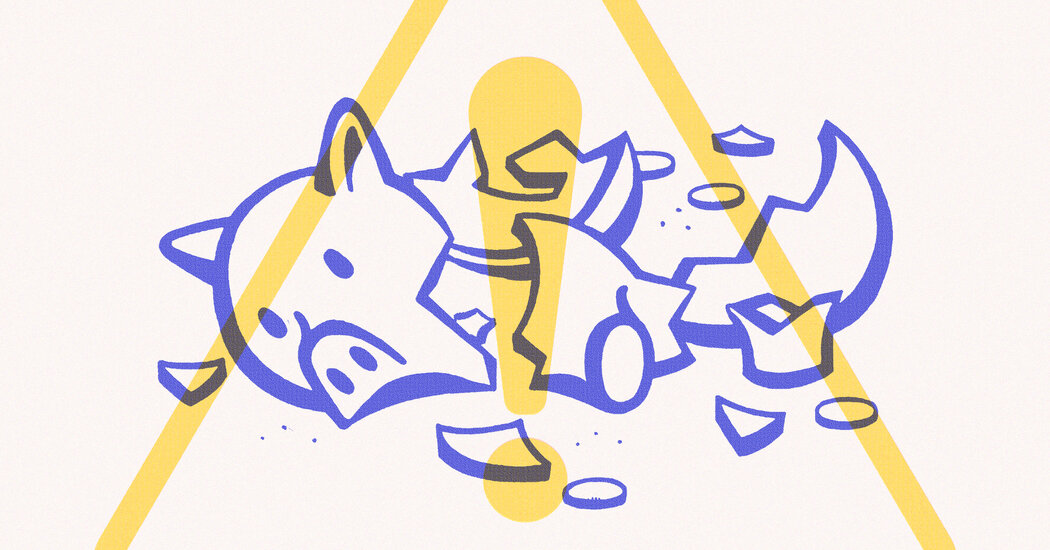Unintentional injuries happen all the time. Cars crash, people fall off ladders, houses burn down when candles catch the drapes on fire. So, what could Jessie Singer possibly mean when she says “there are no accidents”?
Singer, a journalist, argues that what we call accidents are in the aggregate predictable and tend to happen most often to the poor, who don’t have the means to protect themselves. She wrote a book set to come out on Feb. 15 titled “There Are No Accidents: The Deadly Rise of Injury and Disaster — Who Profits and Who Pays the Price.”
The book is dedicated “With love and rage in memory of Eric James Ng (1984-2006).” There is a tragic story behind that dedication, but more on that later.
Singer doesn’t focus on high-profile deaths like that of Petr Kellner, the Czech Republic’s richest man, who perished along with four others in a helicopter crash during a heli-skiing trip in Alaska in March 2021. She’s more concerned with common, largely unseen deaths that could have been avoided if society protected its most vulnerable.
She’s not the only one sounding the alarm. The National Safety Council, a nonprofit agency, says that in 2020, preventable-injury-related deaths rose 16 percent from 2019, and that from 1992 to 2020, the annual age-adjusted rate of mortality from preventable injuries increased by two-thirds even as the overall mortality rate fell slightly. Like Singer, the National Safety Council eschews the word “accidental.” But it uses “preventable” to refer to what the government calls “unintentional.”
I called Singer last week for an interview. (Disclosure: Her husband, Andrew Hinderaker, is a staff editor in the Metro photo department of this newspaper.) I don’t agree with her on everything; for one, I’m more inclined to using cost-benefit analysis than she is. But I think she makes some strong points. Here are excerpts from our conversation as edited by both of us in follow-up emails.
How did this book come about?
The book begins with the death of my best friend, Eric. He was killed riding his bicycle in 2006 by a driver who was drunk and speeding and driving on the bike path. This man went to prison. He told a policewoman at the scene: “I got into an accident. My car hit this person.” As if he wasn’t even there.
My background is in investigative journalism. Accidents are supposed to be random and unpredictable events, but when I looked into the numbers there’s nothing random. They’re divided along race and class lines. Especially when the cause of death is a matter of policy and infrastructure.
The apartment building fire in the Bronx on Jan. 9 that killed 17 people is a prime example of this. We know the causes of fires. Yet big apartment fires like this occur every few years. The building wasn’t maintained, people were relying on supplemental heat, the self-closing doors malfunctioned.
Still, we look at the last link at the causal chain and we point the finger there. That narrative fails to ask, why did those people need supplemental heat? People make mistakes. That is a universal truth. The question is, for whom are the mistakes survivable?
I normally don’t even use the word “accident.” I hope you can imagine me saying it every time in air quotes. The C.D.C. calls these “unintentional injury deaths.”
Is part of the problem that poverty causes people to live chaotic lives?
That’s a fundamental attribution error. We attribute our own mistakes to the circumstances we were in at the time, while we attribute other people’s mistakes to their personal failings. We’ll do it in the face of all evidence to the contrary. We need to instead be about preventing harm, throwing a pillow between us and our mistakes.
Conservatives tend to believe much more strongly in the “just world” fallacy. It follows, by their logic, that if you die by accident, you must have made a mistake and you deserve it.
Not sure that’s fair to conservatives. Anyway, is it possible to go too far in preventing accidents? It wouldn’t make sense to limit cars to going 30 miles per hour.
It is our moral and ethical imperative to do everything in our power to protect human life. When people talk about the nanny state, what they’re doing is making excuses for deeply preventable, deeply racialized and class-divided causes of death.
If we look at places that do everything in their power to protect human life, from Sweden’s Vision Zero traffic safety policies to Portugal’s harm-reduction overdose prevention policies, we see that countless lives could be saved just by putting people first.
Why has the death rate from unintentional injuries risen since 1992?
Income inequality tracks with accidental death; this was true in the Industrial Revolution and is still true today. After World War II we built out the social safety net, and a little while later we built systems of regulation. We had unions and the Occupational Safety and Health Administration. A person protected by the social safety net could afford to not take the most dangerous work out there, and a person protected by regulation also had OSHA looking out for them at those jobs. The accidental death rate fell for decades.
Since 1992, the rate has been rising. This is the aftereffect of President Ronald Reagan dismantling the social safety net, and him and every president who would follow defunding and defanging the regulatory agencies we created to keep us safe.
Tort lawsuits can help, although only after the worst has occurred. But they can prevent things from happening again and again. Accidental death rates in anesthesiology plummeted after hospitals were sued and changed their practices. The problem is, so-called tort reform has deeply disempowered individuals from suing. The effort to limit suits has gone way too far.
The workers’ compensation system has also helped. People used to die at work in truly insane numbers. In the past that only cost you as much as hiring a replacement. Now it costs them more to have a high accident rate.
I like the Swiss cheese model as a way to understand how risk leaks through. Each layer of protection has holes but if you have enough layers, nothing can get through. Some of our layers of safety depend on who we are. Which is why Black people are more likely to die in house fires. It comes down to what housing you have. That could be a hole in your Swiss cheese.
Number of the week
7.3 percent
Predicted increase in U.S. Consumer Price Index in January from a year earlier, according to economists at Royal Bank of Canada. That would be the highest in 40 years. “We have highlighted many times that we expect services prices (led by shelter, and rent in particular) to provide something of a floor beneath inflation over the balance of the year. But there is a real possibility that goods prices fall even harder than we expect,” they wrote on Feb. 4. The Bureau of Labor Statistics will release the official number on Thursday.
Quote of the day
“Of course conservatives value liberty, and acknowledge the right of individuals to choose their own way to happiness. But they also believe that the human individual is an artifact, brought into being by the customs and institutions of society, and that true liberty arises only from a culture of obedience, in which law and community are shared assets maintained for the common good.”
— Roger Scruton, from the preface to the U.S. edition of his book “Conservatism: An Invitation to the Great Tradition” (2018)


























